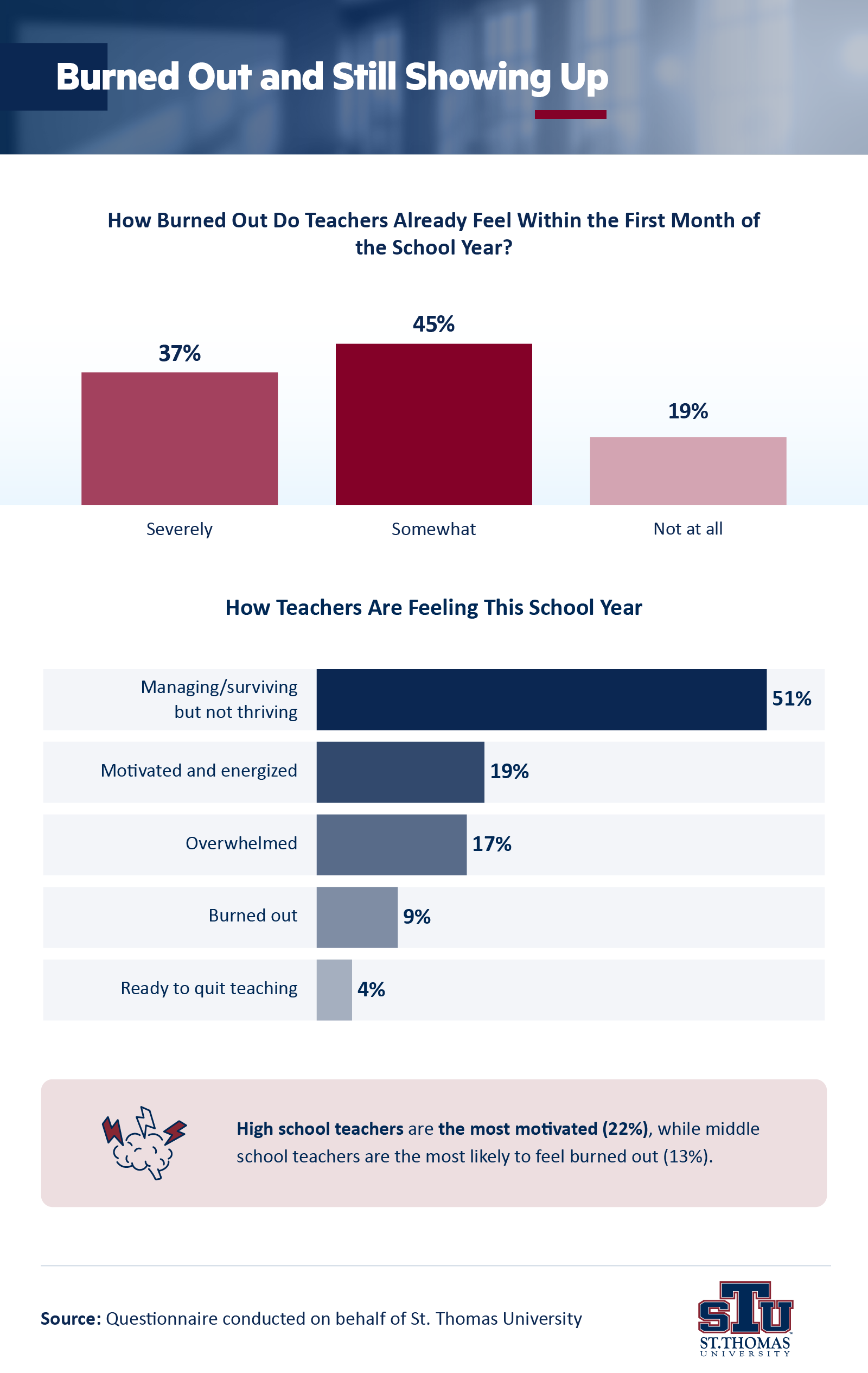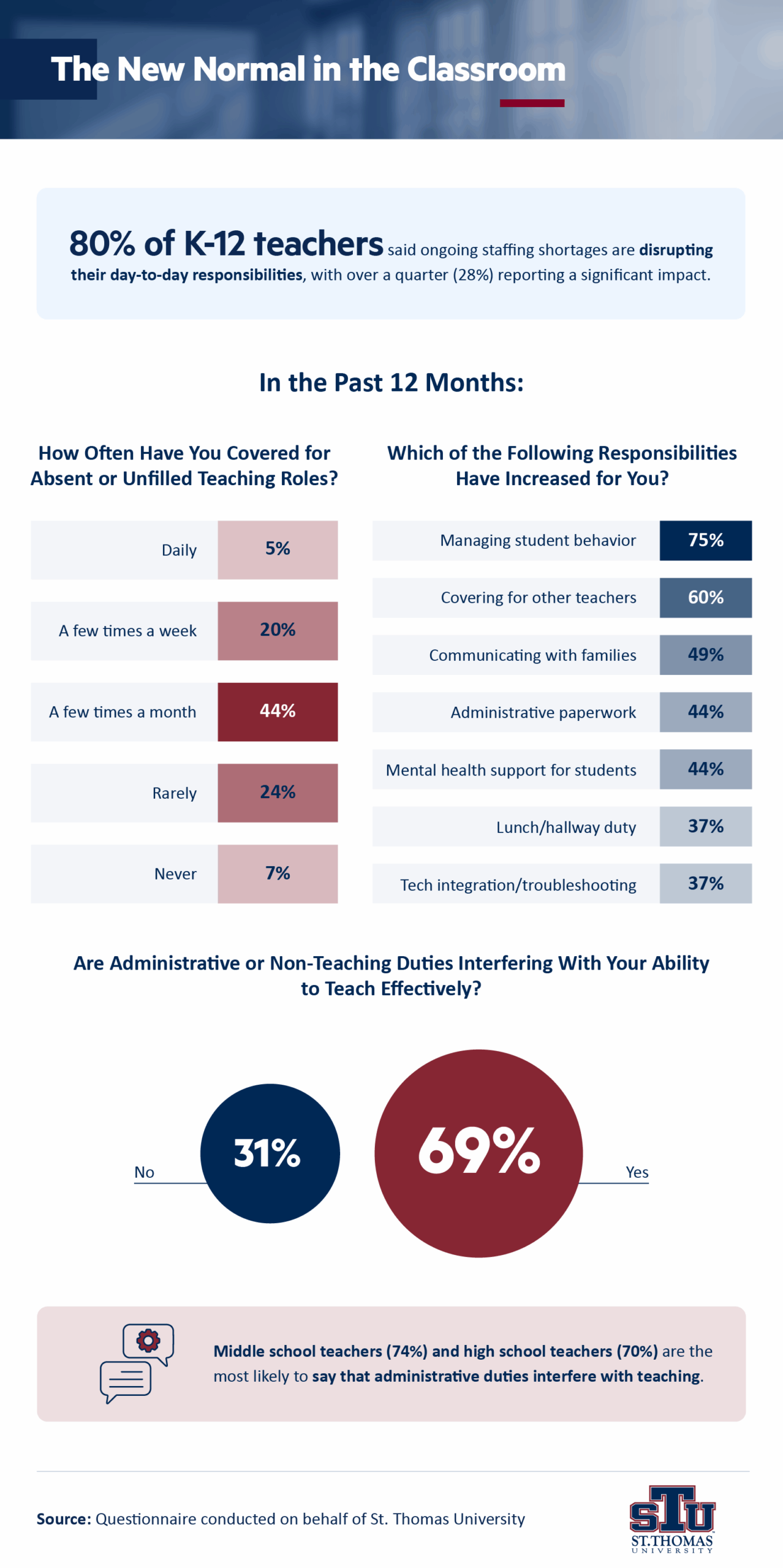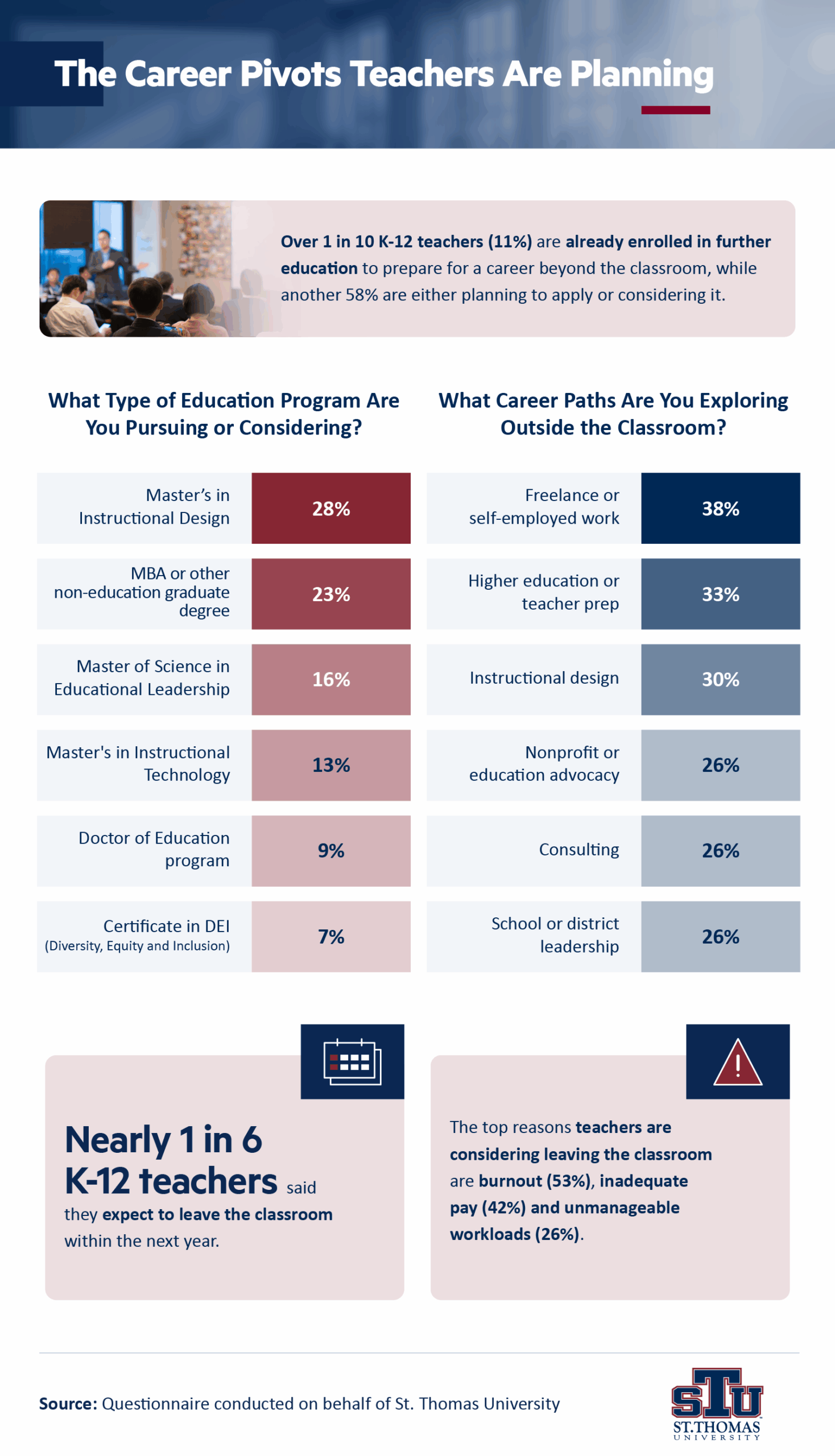
Across the U.S., teacher shortages are placing new pressures on educators and changing the teaching profession. To better understand how these challenges influence teachers’ career decisions, a questionnaire was conducted on behalf of St. Thomas University (STU). It asked K-12 educators about burnout, shifting responsibilities at work and the possibility of moving into leadership or new fields.
As a leader in online education, STU is interested in how teachers are adapting and how advanced degrees or certificates can support those exploring career pivots. The findings highlight how teachers are managing heavy workloads while also considering further education and new career opportunities.
Key Takeaways
- 60% of teachers report covering for absent colleagues in the past 12 months.
- Nearly seven in 10 teachers (69%) said administrative or non-teaching duties interfere with their ability to teach effectively.
- Over one in 10 K-12 teachers (11%) are already enrolled in further education to prepare for a career beyond the classroom, while another 58% are either planning to apply or considering it.
- Burnout (53%), inadequate pay (42%) and unmanageable workloads (26%) are the top reasons pushing teachers to explore new career paths.
- 82% of teachers said they already feel burned out within the first month of the school year.
How Teachers Are Feeling This School Year

- 82% of teachers already feel burned out within the first month of the school year.
- Millennial teachers report the highest levels of burnout, with 44% saying they already feel completely burned out.
Teachers Face More Work Due to Staffing Shortages

- 60% of teachers have covered for absent colleagues in the past 12 months.
- More than one in 16 teachers have delayed retirement because of staffing shortages or a sense of obligation to their school.
- Nearly seven in 10 teachers (69%) say administrative or non-teaching duties interfere with their ability to teach effectively.
- As teachers’ responsibilities at school have increased, they have made these sacrifices in their personal lives:
- Mental health or stress management: 67%
- Sleep or rest: 58%
- Personal hobbies or interests: 48%
- Physical health (e.g., exercise, doctor visits): 43%
- Household responsibilities: 42%
- Time with family: 42%
- Time with friends or a social life: 41%
- Financial stability (e.g., paying for supplies, extra childcare): 23%
Teachers Making Career Changes

- Burnout (53%), inadequate pay (42%) and unmanageable workloads (26%) are the top reasons pushing teachers to explore new career paths.
- Other reasons for considering a career change out of the classroom:
- Interest in a new challenge: 22%
- Frustration with education policy or leadership: 22%
- A desire to have a broader impact beyond one classroom: 18%
- Lack of growth or advancement opportunities: 13%
- High school teachers are the most likely to be planning an exit soon: 16% expect to move into a role outside the classroom within the next year, compared to 14% of early childhood teachers and 13% of middle school teachers.
- 11% of K-12 teachers are already enrolled in further education to prepare for a career beyond the classroom, while another 58% are either planning to apply or considering it.
- Beyond graduate programs, teachers are also turning to smaller-scale professional growth opportunities:
- Professional certificates or licensure: 27%
- Mentorship from someone with broader career experience: 23%
The Future of Teaching Careers
Many teachers are feeling the strain of burnout, heavier responsibilities and limited resources, which has led some to consider new roles or career pivots. At the same time, a growing number are pursuing advanced education to prepare for leadership positions or opportunities beyond the classroom. For educators weighing their next steps, exploring graduate programs or professional certificates can be an important way to gain new skills, increase career flexibility and build resilience in a changing profession.
Methodology
A questionnaire was conducted on behalf of St. Thomas University of 334 educators in August 2025. Of the respondents, 50% teach in elementary school, 14% in middle school and 37% in high school. The generational breakdown included Gen Z (10%), millennials (46%), Gen X (37%) and baby boomers (7%). Data was collected via the Prolific platform.
This is a non-scientific, exploratory questionnaire designed to explore behavioral and attitudinal trends. It is not intended to represent all teachers or potential students.
About St. Thomas University
St. Thomas University empowers educators to take the next step in their careers with flexible, accredited degree programs. For those considering leadership roles or new opportunities in education, STU’s online Ed.D. in Educational Leadership programs offer advanced training in administration, sports administration, and digital instruction and distance learning. STU provides working professionals with the tools to succeed in classrooms and beyond.
Fair Use Statement
The information in this article is available for noncommercial use only. If you choose to share the content, please provide proper attribution with a link back to St. Thomas University.